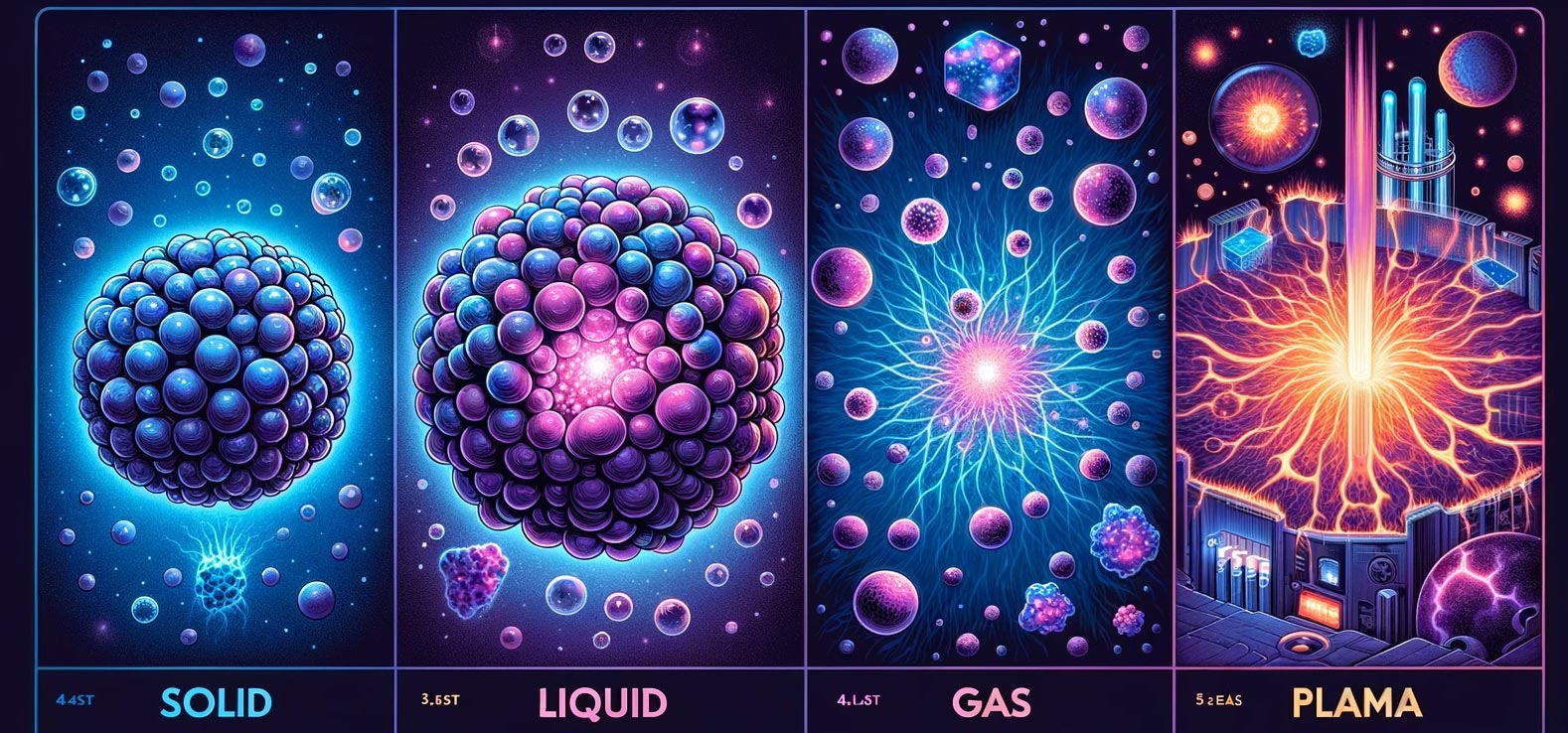
Plasma: The Fourth State of Matter Explained
Introduction
Most of us are familiar with the three basic states of matter – solid, liquid, and gas. However, beyond these commonly known states exists the plasma state, which plays a crucial role in numerous natural and technological occurrences. This article aims to provide an in-depth understanding of the plasma state of matter, its distinctive properties, and its significance in modern-day applications and natural phenomena.
Definition of Plasma State of Matter
At its core, plasma is an ionized gas consisting of positively charged ions and free electrons. Unlike neutral gases where the number of negative and positive charges is equal, in plasma, these charges are separated due to ionization, giving it unique properties distinct from other states of matter.
"Plasma is often referred to as the fourth state of matter, primarily because of its distinctive behavior and properties, which set it apart from solids, liquids, and gases." - Francis F. Chen in "Introduction to Plasma Physics and Controlled Fusion."
Comparison Between Solid, Liquid, Gas, and Plasma
To truly grasp the essence of plasma, it's crucial to understand how it contrasts with the other three states:
-
Solid: Molecules are closely packed and vibrate about fixed positions. They have a definite shape and volume.
-
Liquid: Molecules are close but can move around each other. They take the shape of their container but have a fixed volume.
-
Gas: Molecules are widely spaced and move freely. They take both the shape and volume of their container.
-
Plasma: Contains a mixture of free electrons and ions. Due to its charged nature, it reacts strongly to electromagnetic fields, unlike the other three states.
Properties of Plasma in Physics
Plasma's distinct nature bestows upon it several characteristic properties:
- Electrical Conductivity: Plasma is an excellent conductor of electricity due to the free movement of charged particles.
- Magnetism: Plasma can be influenced by magnetic fields, leading to the concept of magnetic confinement used in fusion research.
- Reaction to Electromagnetic Fields: Unlike neutral gases, plasma reacts robustly to both electric and magnetic fields, resulting in complex behaviors.
Common Occurrences of Plasma
Plasma is not just a laboratory curiosity; it's prevalent in the universe and has practical applications:
-
Plasma in Space and Stars: Space isn't empty; it's filled with plasma. Stars, including our sun, are hot balls of glowing plasma.
-
Technological Applications: Plasma finds use in neon signs, fluorescent bulbs, and plasma televisions. It's also employed in certain industrial processes, such as plasma cutting.
Role of Plasma in Modern-Day Applications
-
Fusion Energy: One of the most significant potential applications of plasma is in fusion energy research. Fusion, the process by which the sun generates energy, involves combining light atomic nuclei to form a heavier nucleus, releasing a large amount of energy. Efforts are ongoing to harness this process on Earth using devices that confine high-temperature plasma.
-
Electronics: Plasma aids in the manufacture of semiconductors and other electronics, enabling the technology-driven world we live in.
Case Study: The International Thermonuclear Experimental Reactor (ITER) is an example of humanity's efforts to achieve controlled nuclear fusion using magnetic confinement of plasma. When operational, it aims to be a significant step towards clean and sustainable energy.
How is Plasma Created?
Plasma is formed when energy, such as heat or light, is applied to a gas, causing its atoms to ionize. This process can occur naturally, as seen in stars, or can be induced in laboratories or industrial settings.
Conclusion
Plasma, the fourth state of matter, holds the key to numerous mysteries of the universe and promises advancements in technology. As researchers further delve into the intricacies of plasma physics, one can only anticipate the revolutionary applications that might emerge.
For those keen on delving deeper into the world of plasma physics, the book "Introduction to Plasma Physics and Controlled Fusion" by Francis F. Chen offers a treasure trove of information. Moreover, NASA's resources on space plasma and websites of renowned physics institutions like the American Physical Society and the Institute of Physics can provide more insights.
Chemistry Science



